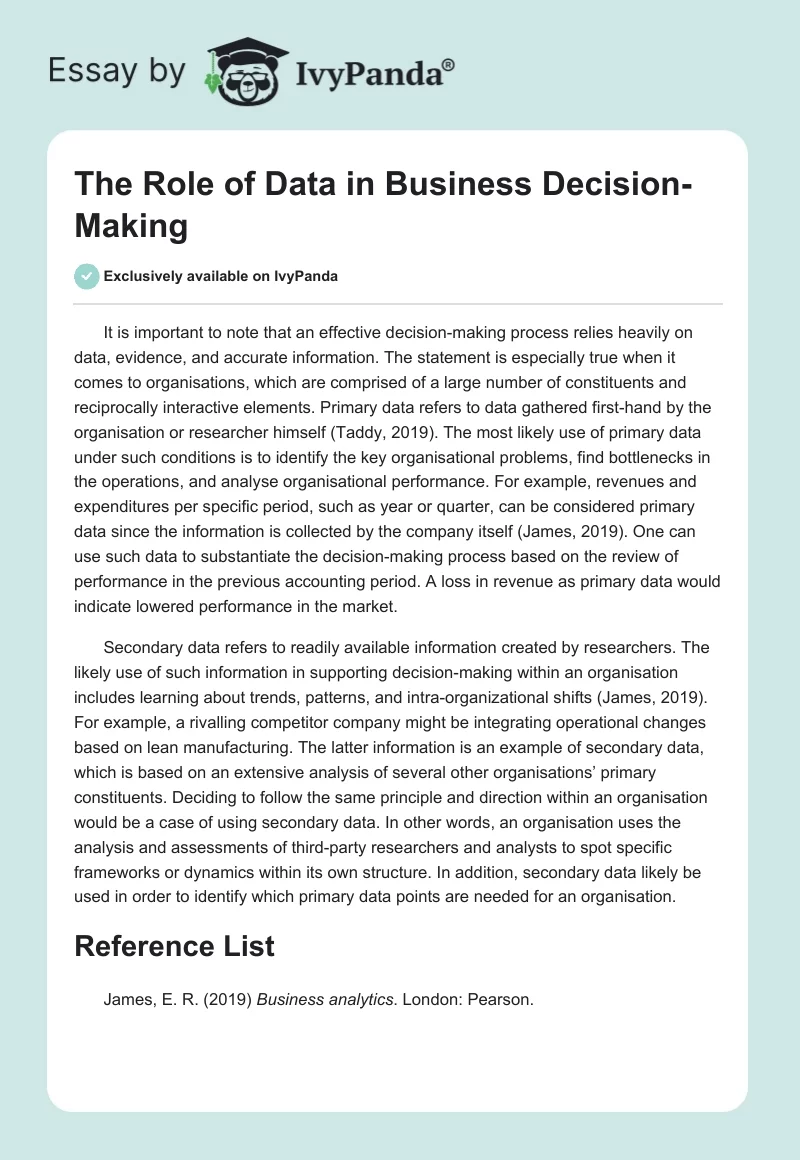It is important to note that an effective decision-making process relies heavily on data, evidence, and accurate information. The statement is especially true when it comes to organisations, which are comprised of a large number of constituents and reciprocally interactive elements. Primary data refers to data gathered first-hand by the organisation or researcher himself (Taddy, 2019). The most likely use of primary data under such conditions is to identify the key organisational problems, find bottlenecks in the operations, and analyse organisational performance. For example, revenues and expenditures per specific period, such as year or quarter, can be considered primary data since the information is collected by the company itself (James, 2019). One can use such data to substantiate the decision-making process based on the review of performance in the previous accounting period. A loss in revenue as primary data would indicate lowered performance in the market.
Secondary data refers to readily available information created by researchers. The likely use of such information in supporting decision-making within an organisation includes learning about trends, patterns, and intra-organizational shifts (James, 2019). For example, a rivalling competitor company might be integrating operational changes based on lean manufacturing. The latter information is an example of secondary data, which is based on an extensive analysis of several other organisations’ primary constituents. Deciding to follow the same principle and direction within an organisation would be a case of using secondary data. In other words, an organisation uses the analysis and assessments of third-party researchers and analysts to spot specific frameworks or dynamics within its own structure. In addition, secondary data likely be used in order to identify which primary data points are needed for an organisation.
Reference List
James, E. R. (2019) Business analytics. London: Pearson.
Taddy, M. (2019) Business data science: combining machine learning and economics to optimize, automate, and accelerate business decisions. New York City: McGraw Hill.


